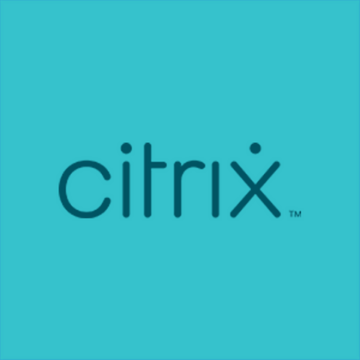Not long ago, cloud was seen as a fad—something for startups to take a chance with, but hardly a serious choice for enterprise IT. Now, it’s increasingly the preferred method of accessing and delivering technology.
The typical enterprise already uses more than 14 public cloud apps and analysts predict that over half of IT workloads will run in a cloud by 2020. More than 60 percent of employees use public cloud file sharing technology to store and share their company’s data. This rapid rise has been driven by transformative benefits—faster innovation, greater agility and lower TCO. It’s no exaggeration to say that the cloud has sparked both a revolution in IT and a new era of digital business.
That’s the good news—but it’s not the whole story. To preserve and extend these benefits, we need to address an unintended consequence that came along with them: cloud sprawl.
The cloud falls victim to its own success
As enthusiasm for the cloud leads IT, lines of business, and even individual users to provision cloud services left and right, organizations are seeing higher complexity and greater risks for all constituents. The resulting problems include:
- Users are forced to navigate multiple cloud environments, each with varying user experiences and each requiring different access credentials. In many instances, users must access at least three different applications to complete a single business process.
- Companies are increasingly uncertain who is accessing their apps or where their sensitive data resides. Even when using the most secure cloud offerings, company information remains in browser caches where it can’t be effectively protected.
- And information technology (IT) professionals are struggling to monitor—let alone manage—it all.
We’ve come too far with the cloud to let sprawl undermine its value. In fact, solving cloud sprawl is critical for both the present and future of IT. In today’s anywhere, anytime enterprise, cloud services power digital workspaces where team members can come together on any device, over any network, to collaborate with common apps and share files in a secure, controlled way. As the sensors, smart rooms, wearables and other components of the Internet of Things enable powerful new capabilities, they also bring new dimensions of sprawl to the environment. The answer isn’t to curtail cloud services, but to address the unwanted side-effects of their proliferation.
A new model: unified cloud delivery
To overcome cloud sprawl without sacrificing the benefits of the cloud itself, IT needs a more efficient and comprehensive way to organize, manage and secure all cloud services used across the organization—from frontline SaaS apps to behind-the-scenes workloads to file storage and sharing. This modern IT framework must also bridge the multiple legacy, on-premises and custom apps and data stores on which businesses continue to rely.
In short, a new unified cloud delivery platform is required to ensure simplicity, security, flexibility, and performance across all apps, devices, and data resources in today’s hybrid, multi-cloud IT environments. A viable platform for unified cloud delivery would serve as a virtual window into all cloud services for users and IT, unifying all approved application and data services from any provider or resource location into a single portal or control plane.
A unified cloud delivery platform would enable:
- A better experience for users. Single sign-on across all types of services, wherever they’re hosted, enables a seamless experience. Behind the scenes, contextual security and contextual performance intelligently apply access approaches based on a user’s rights, location and the device and network they are using. For example, a trader at a financial services company can be allowed access to a given trading application when on the firm’s secure network, but not from a third-party or unfamiliar network. Similarly, the user’s access can be routed intelligently over higher bandwidth networks for large workloads such as business intelligence (BI), high-density graphics, and VoIP or video conferencing.
- Enhanced security. In today’s high-risk landscape, it’s simply unacceptable to let people access, download and store data anywhere they like, on any device, using any network. Instead, IT should apply conditional security rules to allow access according to the user’s location, device and network. Sensitive data can be kept centralized in the data center to be accessed remotely, instead of becoming vulnerable on loss-prone endpoints.
- Simplified management with greater control for IT. The benefits of a unified cloud delivery platform would extend to IT as well, arming IT and network administrators with a single control plane to on-board apps, configure and provision digital workspaces and end-point devices, and proactively monitor and manage performance and security.
Citrix Cloud unifies and simplifies IT hybrid, multi-cloud environments
With more than 25 years of providing secure application and data delivery, Citrix is uniquely positioned to deliver an adaptive workspace experience that securely and intelligently provisions apps and data across today’s complex, hybrid, multi-cloud IT environments.
And with Citrix Cloud, we’re doing just that. Citrix Cloud unifies our battle-tested virtualization, software-defined networking, and secure file-sharing offerings into a comprehensive and integrated cloud-based service that gives workers reliable app and data access and seamless experience across all their devices, and arms IT with a single control plane to configure, monitor and manage it all.
We firmly believe that a unified cloud delivery platform will play a vital role in the future, allowing businesses to realize the full benefits of the cloud while avoiding the complexity and security challenges that have come with its widespread and uncontrolled adoption. Users will gain simple, seamless and consistent experiences through complete, multi-source digital workspaces. IT will gain a more rational way to manage and secure the environment—and a little more sanity as well. The business will gain all the agility, cost efficiency and opportunity for innovation promised by the cloud. Without the sprawl.





